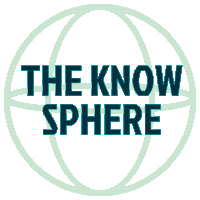The Power of Specificity in AI Prompts
The Power of Specificity
If the Golden Rules for Getting Started taught us how to hold the steering wheel, specificity is the fuel that makes the car accelerate in the right direction. The more precisely you describe what you need, the fewer wrong turns the model can take—and the less time you’ll spend rewriting. In this third instalment we’ll unpack how tiny details dramatically improve results, show common pitfalls, and give you quick drills to strengthen your “specificity muscle.”
1 | Why Details Matter: Shrinking the Search Space
Large Language Models predict the next token from billions of possibilities. Every extra clue—an exact audience, a word-count limit, a date, even an emoji—cuts that possibility space. Think of it like searching a library:
- Vague request: “Find a book about history.”
- Specific request: “Find a 200-page biography of Marie Curie published after 2015, in large print.”
The second request narrows the librarian’s task from thousands of shelves to a single shortlist. AI behaves the same way.
2 | Four Axes of Effective Specificity
| Axis | Ask Yourself… | Micro-Example |
|---|---|---|
| Audience | Who will read or view this? How tech-savvy, what age, what goal? | “Explain NFTs to retirees with basic smartphone skills.” |
| Purpose | What job must the output do? Inform, persuade, entertain, automate? | “Persuade local council members to approve a rooftop garden.” |
| Format | How should it look? Length, structure, file type? | “Return a Markdown table with 3 budget scenarios.” |
| Constraints | Must-include facts, tone, dates, numbers, or banned words? | “Use the phrase ‘age is your upgrade’ and keep under 120 words.” |
Hit all four axes and you’ll jump from “pretty good” to “publish-ready” on the first pass.
3 | Case Study: From Blurry to Crystal-Clear
The Brief
A reader asked for a product description:
“Write copy for a camping lantern.”
First Attempt (Vague Prompt)
“Describe our new camping lantern. Mention it’s bright and durable.”
Result: 250 words of generic fluff—could describe any lamp from 1998.
Refined Prompt (Specific)
“Act as an outdoor-gear copywriter. Write a 75-word Amazon listing bullet list for the GlowMax 1000-Lumen USB-C Lantern, highlighting IP67 waterproof rating, 80-hour eco mode, and a built-in power bank. Close with the line: ‘Charge your adventure, not just your phone.’”
Result: Crisp bullets, correct specs, catchy final hook—and it met the 80-word display limit without trimming.
4 | Token Economy: Be Precise, Not Verbose
Long prompts aren’t automatically clearer. Every model has a context window—overfill it and early lines may vanish.
- Wordy: “Could you please be so kind as to…”
- Tight: “Explain in 120 words…”
Use numerals, abbreviations, bullets, and sentence fragments where grammar allows. You’ll convey more signal with fewer tokens.
5 | Layering Constraints: A Practical Recipe
- Start broad: “Write a LinkedIn post about remote work.”
- Add audience: “…for first-time team leads.”
- Add length & tone: “…120–150 words, confident, conversational.”
- Add data: “…cite Gallup’s 2025 survey that 72 % prefer hybrid models.”
- Add CTA: “…end with a question inviting comments.”
Run after each layer; stop as soon as output nails the target. Extra layers beyond that often yield diminishing returns.
6 | Five Sneaky Vagueness Traps (and Fixes)
| Trap | Why It Fails | Rapid Fix |
|---|---|---|
| Relative adjectives (“cheap”, “fast”) | Subjective; model guesses. | Use numbers: “under A$50”, “under 30 sec.” |
| Hidden geography | Global default may ignore local laws/tastes. | “For Victorian first-home buyers.” |
| Lonely nouns (“report”, “summary”) | Could be one page or forty. | “One-page PDF executive summary.” |
| Audience silence | Wrong tone level. | “For 12-year-olds,” “for DevSecOps engineers.” |
| Style contradictions | “Formal but cheeky” confuses tone engine. | Choose one tone or give hierarchy: “Formal, with light humor.” |
7 | Specificity Drills You Can Do in 5 Minutes
- Emoji Budget – Ask for a 50-word tweet on water conservation, allow exactly two emojis.
- Unit Swap – Convert an Imperial recipe to metric with quantities rounded to the nearest gram.
- Persona Flip – Summarise the same news story first for an 8-year-old, then for a policy analyst—notice vocabulary changes.
- Region Lock – Create a 3-point weather advisory only for coastal NSW farmers, no generic advice.
- Format Gate – Output the top five dog breeds in valid JSON array only.
Do one drill per coffee break; in a week you’ll write crisp prompts instinctively.
8 | When to Loosen Up
Brainstorming and creative exploration benefit from a bit of oxygen:
- Fix format, let content roam: “Give me 10 brand names in a table.”
- Specify ranges, not absolutes: “Around 100 words,” “3–5 ideas.”
Think of specificity as a dimmer switch, not an on/off toggle.
9 | Pocket Checklist (Screenshot This!)
□ Audience spelled out?
□ Clear purpose or job to be done?
□ Explicit length/structure?
□ Key dates, numbers, jargon included?
□ Tone and persona defined?
□ Output language & file type?
□ Must-use / must-avoid phrases?
□ Citations needed?Run through it before you hit Send. Ten seconds now, ten minutes saved later.
Closing Thought
Specificity isn’t micromanagement—it’s compassion for your future self and respect for your readers. The more granular your prompt, the more the AI can shine where you need it, how you need it, when you need it. In the final article we’ll explore The Art of Experimentation, turning prompt tweaking into a miniature science lab that anybody—even total beginners—can run.
Until then, pick one vague prompt you wrote this week, rewrite it with ruthless precision, and watch the model snap to attention. Happy hyper-clarifying!
